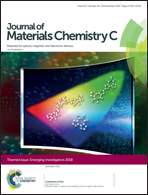Interface chemistry and electrical characteristics of 4H-SiC/SiO2 after nitridation in varying atmospheres
Abstract
SiC has immense potential as the semiconductor for future metal–oxide–semiconductor (MOS) devices. One of the greatest advantages and disadvantages of SiC is its native oxide, SiO2. The ability to use established SiO2 processes to create a reliable dielectric directly on the SiC semiconductor is very desirable. However, the SiC/SiO2 interface exhibits high defect densities leading to detrimental effects on device performance. A variety of treatment processes, often in N-containing atmospheres, has been shown to compensate defects and increase device performance. However, information on the local chemistry at the interface after such processes is scarce, which limits the understanding of the interface and consequently the targeted improvement of device characteristics. The present work uses X-ray photoelectron spectroscopy (XPS) to systematically study the elemental distributions and chemical environments across the 4H-SiC/SiO2 interface after high temperature nitridation treatments in a variety of atmospheres. In particular the use of a NO/NH3 combinatorial process is of great interest as it influences the defect chemistry on both the oxide and carbide side of the interface. We are able to identify N–C–Si environments as the dominant defect states at the interface. The XPS results are correlated with electrical and reflective index measurements, providing new, detailed insights into the relationship between interface chemistry and device behaviour.

- This article is part of the themed collections: Celebrating our 2020 Prize and Award winners and Journal of Materials Chemistry C Emerging Investigators


 Please wait while we load your content...
Please wait while we load your content...